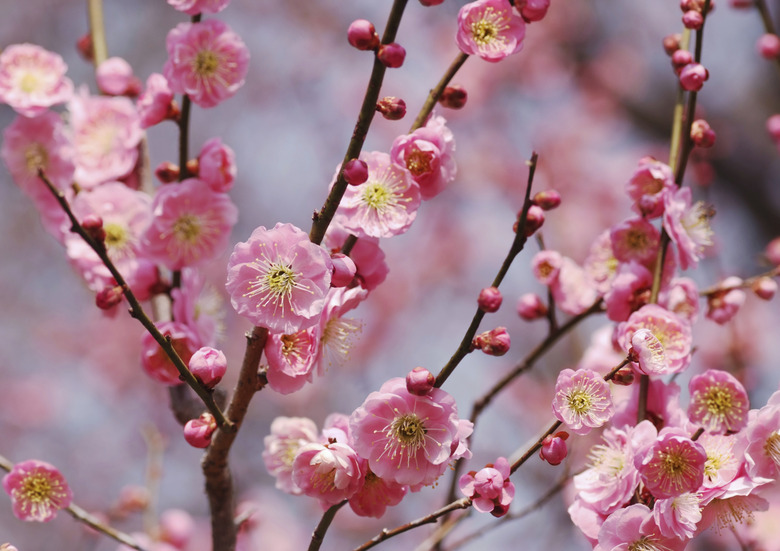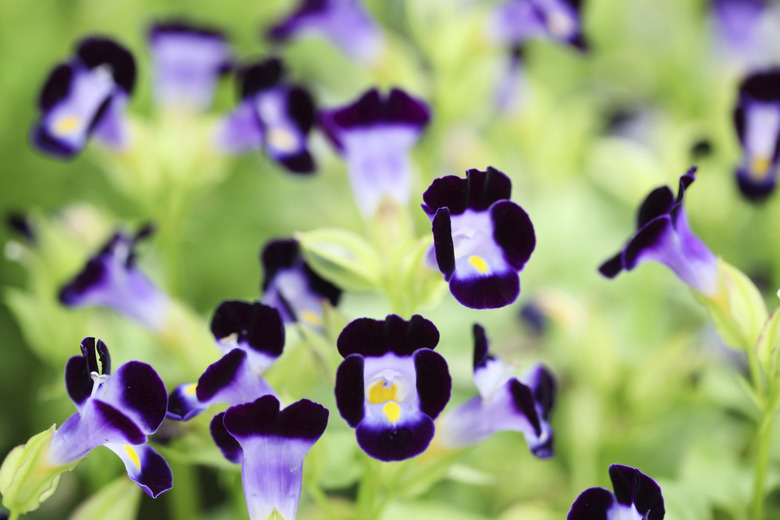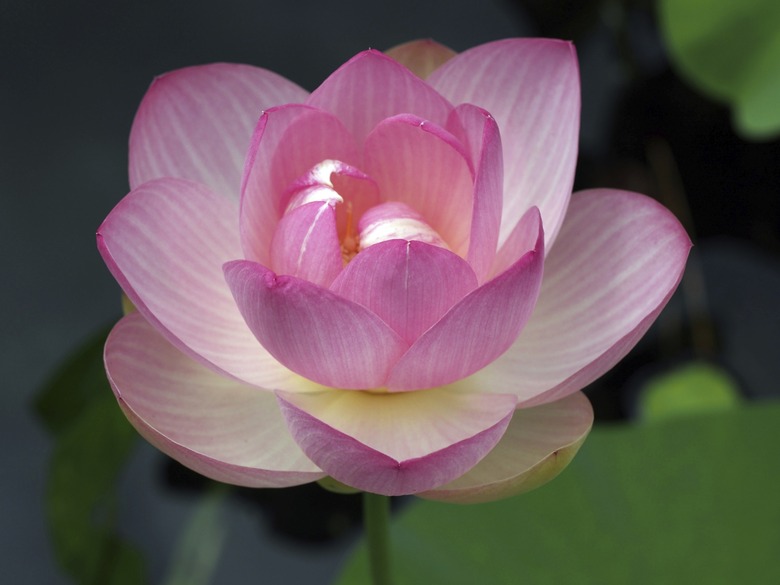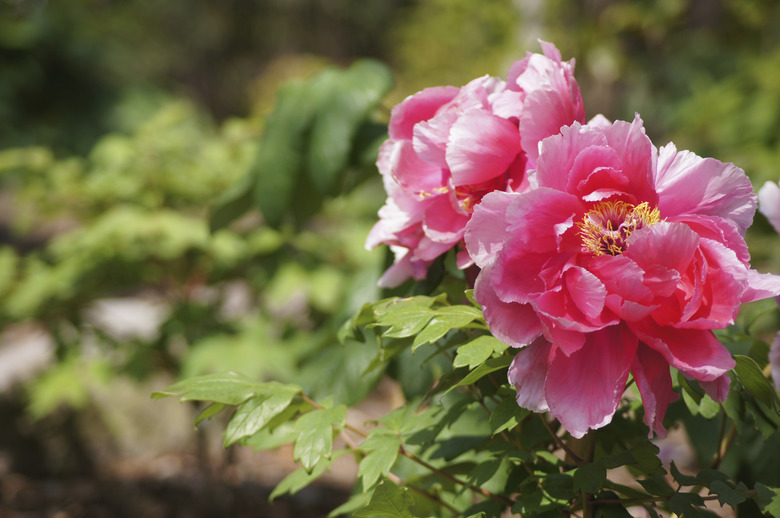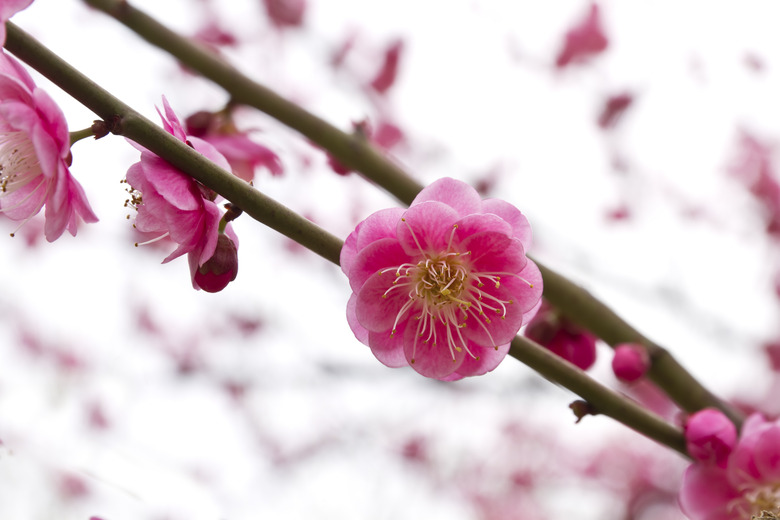Types Of Asian Flowers
North American gardeners have plant explorers and Asian soil to thank for many flowering favorites. Native Asian flowers have made their way here, often via Europe, since the United States' earliest days. From rugosa roses (Rosa rugosa), hardy in U.S. Department of Agriculture plant hardiness zones 7 through 9, to florists' hydrangeas (Hydrangea macrophylla), hardy in USDA zones 6 through 9, many now-familiar flowers favored by American gardeners have Asian roots.
Asian Annuals, Bulbs and Orchids
China aster's (Callistephus chinensis) common and scientific names give away its origin. This cheery annual and its daisylike cultivars keep sunny summer gardens full of color. Wishbone flower (Torenia fournieri), an Asian annual, fills shady places with violet blooms all season. A stalwart of indoor forcing and spring gardens, grape hyacinth (Muscari latifolium) hails from southern and western Asia. With its dependable, grapelike, blue blossoms, the bulb is hardy in USDA zone 3 through 8. Giant ornamental onion (Allium giganteum) once called Central Asia home. The hardy bulb brings softball-size flowers on 4-foot scapes to USDA zone 5 through 8. Beloved moth orchids (Phalaenopsis spp.), hardy in USDA zones 10 through 12, made their way throughout the world, courtesy of Southeast Asia.
- North American gardeners have plant explorers and Asian soil to thank for many flowering favorites.
- From rugosa roses (Rosa rugosa), hardy in U.S. Department of Agriculture plant hardiness zones 7 through 9, to florists' hydrangeas (Hydrangea macrophylla), hardy in USDA zones 6 through 9, many now-familiar flowers favored by American gardeners have Asian roots.
Perennials With Asian Origins
A nod to Asian flowers is incomplete without sacred lotus (Nelumbo nucifera), hardy in USDA zones 4 through 10. Native from Japan to Iran, the aquatic perennial holds an honored spot in Asian religions and culture. The herbaceous garden peony (Paeonia lactiflora) has been grown for more than two millennia. Known as the "Queen of Flowers" in its native China, its fragrance fills spring gardens in USDA zones 3 through 8. The Japanese toad lily (Tricyrtis hirta), hardy in USDA zones 4 through 8, adds late-summer magic on 3-foot arching stems with speckled, lilylike blooms. Common bleeding heart (Lamprocapnos spectabilis), hardy in USDA zones 3 through 9, first bore its weeping, heart-shaped blossoms from Siberia to Korea.
Shrub-Borne Asian Flowers
Known as China's "King of Flowers" and cultivated for 1,500 documented years, the tree peony (Peonia suffruticosa) brings its spectacular 8-inch flowers to USDA zones 4 through 8. Fortune's rhododendron (Rhododendron fortunei) is the Asian native behind the beautiful flowers on many modern rhododendron cultivars. The first Chinese rhododendron introduced to Europe, it bears large, 4-inch flowers in trusses of up to 12 pale-pink blooms in USDA zones 5 through 8. The treasured camellia (Camellia japonica), as its name suggests, is native to China, Korea and Japan. Hardy in USDA zones 7 through 9, its midwinter Asian flowers delight. Gardenia (Gardenia jasminoides), hardy in USDA zones 8 through 11, treats North American gardens to flowers native to Chinese and Japanese shores.
- A nod to Asian flowers is incomplete without sacred lotus (Nelumbo nucifera), hardy in USDA zones 4 through 10.
- The Japanese toad lily (Tricyrtis hirta), hardy in USDA zones 4 through 8, adds late-summer magic on 3-foot arching stems with speckled, lilylike blooms.
Flowering Tree Blossoms
China's national flower is borne on the branches of Chinese plum (Prunus mume), also known as Japanese apricot. Hardy in USDA zones 6 through 9, the tree bears pink, five-petaled plum blossoms said to represent five blessings. Yoshino cherry (Prunus x yedoensis), is a Japanese native hardy in USDA zones 5 through 8. Cherished for branches of white cherry blossoms tinged in pink, this Asian tree provides the backbone for the annual cherry blossom display in Washington, D.C. — a gift from their native land. Magnolia lovers have Japan to thank for the beautiful flowers of star magnolia (Magnolia stellata), hardy in USDA zones 4 through 8. The flowering stems of all three trees figure prominently in Asian art.
